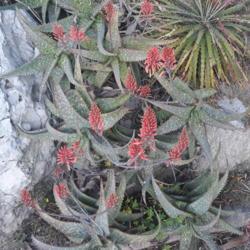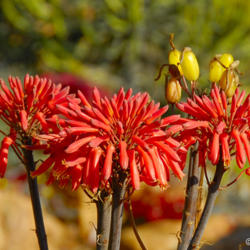To positively ID plants like A. grandidentata you'd really need a close up of the flower as many of these spotted plants are similar enough given intra-species variation that the flower shape is often needed to be completely sure - not just inflorescence shape, but the shape of the actual flower and even then it can be challenging, given that all of these hybridize pretty freely with each other.
For example, I had something labeled A. grandidentata, so if we assume that label was right, at first glance I would say that the inflorescences of the plants in your picture are way too crowded with flowers, and I would therefore be disinclined to agree that your plant is A. grandidentata. However, that kind of difference probably falls within the intra-species variation, as I have seen inflorescences on that plant get denser (but not quite as densely flowered as those in the picture) in terms of flowers with more sun exposure. At that point you can turn to the shape of the flower to try and get an answer as in some of these the flower shape is quite distinct. That is of course all assuming it is a true species and not a hybrid, then all bets are likely of.


